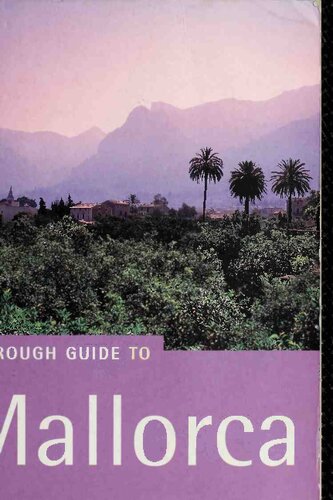

Most ebook files are in PDF format, so you can easily read them using various software such as Foxit Reader or directly on the Google Chrome browser.
Some ebook files are released by publishers in other formats such as .awz, .mobi, .epub, .fb2, etc. You may need to install specific software to read these formats on mobile/PC, such as Calibre.
Please read the tutorial at this link: https://ebookbell.com/faq
We offer FREE conversion to the popular formats you request; however, this may take some time. Therefore, right after payment, please email us, and we will try to provide the service as quickly as possible.
For some exceptional file formats or broken links (if any), please refrain from opening any disputes. Instead, email us first, and we will try to assist within a maximum of 6 hours.
EbookBell Team

0.0
0 reviewsFew Mediterranean holiday spots are as often and as unfairly maligned as Mallorca. The largest of the Balearic Islands, an archipelago to the east of the Spanish mainland which also comprises Menorca, Ibiza and Formentera, Mallorca is commonly perceived as little more than sun, sex, booze and high-rise hotels so much so that theres a long-standing Spanish joke about a mythical fifth Balearic island called "Majorca" (the English spelling) which is inhabited by an estimated eight million tourists a year. However, this image, spawned by the helter-skelter development of the 1960s, takes no account of Mallorcas beguiling diversity.
Until well into the twentieth century, Mallorca was a sleepily agrarian backwater, left behind in the Spanish dash to exploit the Americas from the sixteenth century onwards. Mass tourism has reversed the islands fortunes since World War II, bringing the highest level of disposable income per capita in Spain, but the price has been profound social transformation and the disfigurement of tracts of the coastal landscape. However, the spread of development is surprisingly limited, essentially confined to the Bay of Palma, a thirty-kilometre strip flanking the island capital, and a handful of mega-resorts notching the east coast. Elsewhere, Mallorca is much less developed than many other parts of Spain.
Palma, Mallorcas capital and the Balearics one real city, is a bustling, historic place whose grandee mansions and magnificent Gothic cathedral defy the expectations of many visitors. To the east of Palma stretches Es Pla, an agricultural plain that fills out the centre of the island, sprinkled with ancient and seldom-visited country towns. On either side of the plain are coastal mountains. In the west and to the north, the rugged Serra de Tramuntana hides beautiful cove beaches, notably Cala de Deià and Platja de Formentor, and deep sheltered valleys. The range is crisscrossed with footpaths and makes for ideal hiking country, particularly in the cooler spring and autumn. Tucked away here too are a string of picturesque villages, such as Orient and Fornalutx, and a pair of intriguing monasteries at Valldemossa and Lluc. The gentler, greener Serres de Llevant shadow the coves of the east coast and culminate in the pine-clad headlands and medieval hill towns of the islands northeast corner. Theres a startling variety and physical beauty to the land, which, along with the mildness of the climate, has drawn tourists to visit and well-heeled expatriates to settle here since the nineteenth century, including artists and writers of many descriptions from Robert Graves to Roger McGough.